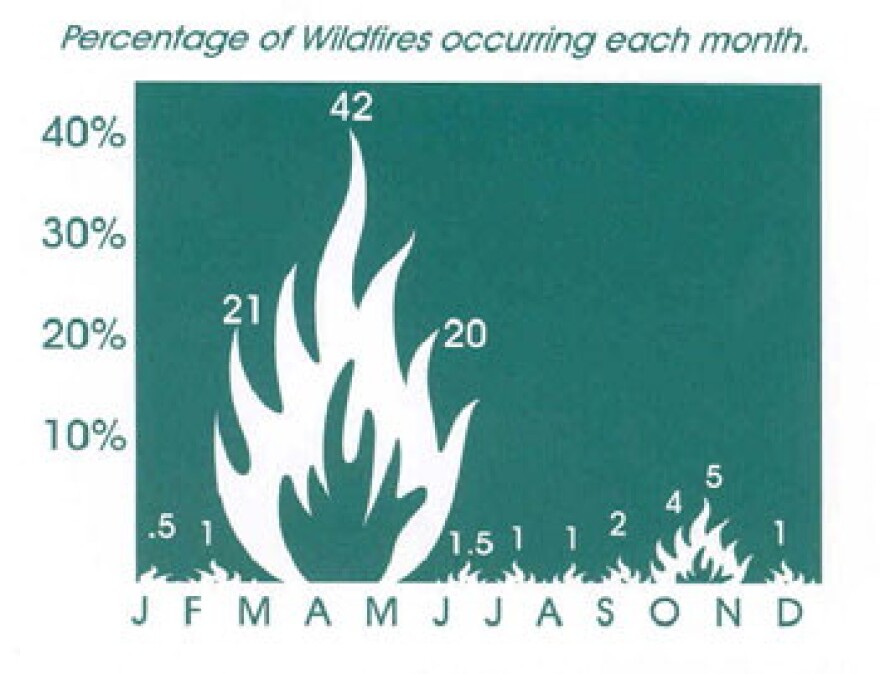As the spring season brings its annual rash of wildfires to Pennsylvania, Allegheny County officials are warning residents and businesses that large piles of mulch are liable to catch on fire on their own.
“Mulch in large piles will generate its own internal heat, and it has the potential to spontaneously combust – which a lot of people just don’t pay attention to that," said Matt Brown, Allegheny County Emergency Services Chief. "That may, under normal conditions, not represent much of a hazard, but some places have very large deliveries of mulch, and those large piles can represent a significant fire hazard.”
Brown said mulch raked across small residential gardens shouldn't be a problem.
“When it’s spread out, it’s not much of a concern, but when it’s a very large pile, I can almost guarantee you – you will see the steam coming off of it," Brown said. "If you were to dig through to the center of that pile, it’s just incredible, the amount of heat that’s being generated there. It’s just natural decomposition, but it will ignite eventually.”
Tom Williams, a firefighter at the Pittsburgh Bureau of Fire, said he knew of "at least six" fires that started in mulch piles over the last several days. County officials reported at least four more fires of any cause over the past week.
Chief Brown went on to warn residents against carelessness when smoking or burning outside. He said he might consider pushing for stronger county-level restrictions on open burning in the dry, windy weather of March, April and May.

“Historically, the open burning in Allegheny County has really been regulated from a Health Department standpoint because of the health effects and the air quality effects – which is good, sound reasoning," Brown said. "But I think there’s an opportunity moving forward, potential for us to add some more meat and potatoes, if you will, to that standard with relation to the fire threat in general.”
According to the state Department of Conservation and Natural Resources, 83 percent of wildfires in Pennsylvania happen in the spring, when still-bare trees and undergrowth are at greater risk of ignition due to strong winds and low humidity. According to the DCNR, wildfires in Pennsylvania have grown increasingly uncommon, steadily decreasing from about 877 per year in the early 1930s to just about 120 per year in the 2010-14 time period.




